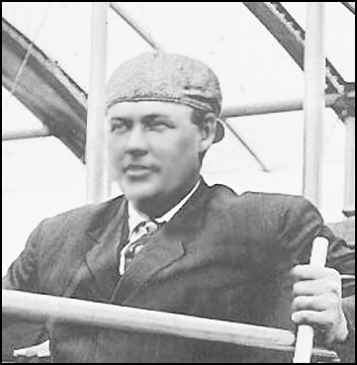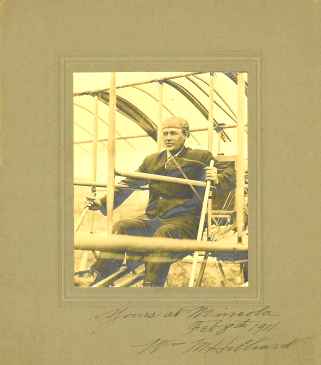
 |
 |
Feb 8th 1911 Wm M Hilliard Collection of Carol M. Lavis, 8-31-05 Carol hopes to find a home for this beautiful photograph. If you are interested, I will forward your message to her. (3-7-06) |
|
Daily Journal and Tribune, Knoxville, Tennessee: June 25, 1910, Via email from Bob Davis - 9-22-03 So his airspeed averaged about 35 miles per hour. |
|
Daily Journal and Tribune, Knoxville, Tennessee: August 19, 1910, Via email from Bob Davis - 9-2-03 |
|
Walter Brookins Arthur Johnson Glenn H. Curtiss Charles F. Willard M. Didier Masson A.V. Roe, J. Graham White William M. Hilliard J. M. All_as Ernest P. Lincoln, Clifford D. Harmon Captain Thomas Baldwin Jacques Delesseps Dr. W. P. Christmas, John G. Stratton Horace F. Kearner Greely S. Curtis |
Wright biplanes Wright biplanes Curtiss biplanes Curtiss biplanes Vendome aeroplane Roe Triplane Farman biplane & Bleriot monoplane; Herring-Burgess biplane Harvard biplane; Christmas biplane Burgess-Curtiss aeroplane Pfitzer monoplane Bleriot monoplane |
|
|
|
Witchcraft, awful architecture, first flight, slavery reparations. This very comprehensive article was written by Edward S. Russell '78, President, Plum Island Community Airfield Inc., Byfield, Mass. It tells a fascinating story, featuring the important roles of several pioneer aviators and offers two important photographs of the Herring-Burgess #1 biplane, Courtesy of Burgess Aviation Museum, Plum Island Airfield, on loan from Bartlett Gould Collection. Following is an introductory paragraph extracted from the article. "The first airplane flight in New England occurred almost two months earlier than Lenger reported. (See the article immediately below.) On February 28, 1910, the Herring-Burgess #1 biplane, piloted by Augustus M. Herring, took off from the frozen surface of Chebacco Lake in Hamilton. The host for the flight was Norman Prince '09, LL.B. '11, a Law School student who, as legend has it, invited W. Starling Burgess '01 and Herring to try out their flying machine at his family estate while his parents were in Europe and young Prince was supposed to be studying. (Prince later cofounded the Lafayette Escadrille, a corps of American aviators who flew for France prior to the U.S. entry into World War I. He was killed in a crash on a mission in 1916.)" I suggest that you will be well rewarded by reading the whole article. |
|
In aviation's early days, Harvard pioneers advanced aeronautics and brought flight to the masses. By John Lenger |
|
If you have any more information on this Early Flier, please contact me. E-mail to Ralph Cooper Back 

|